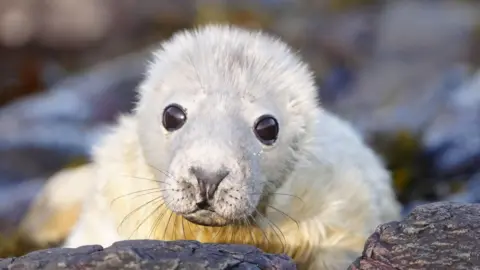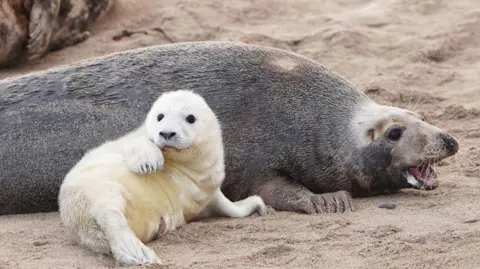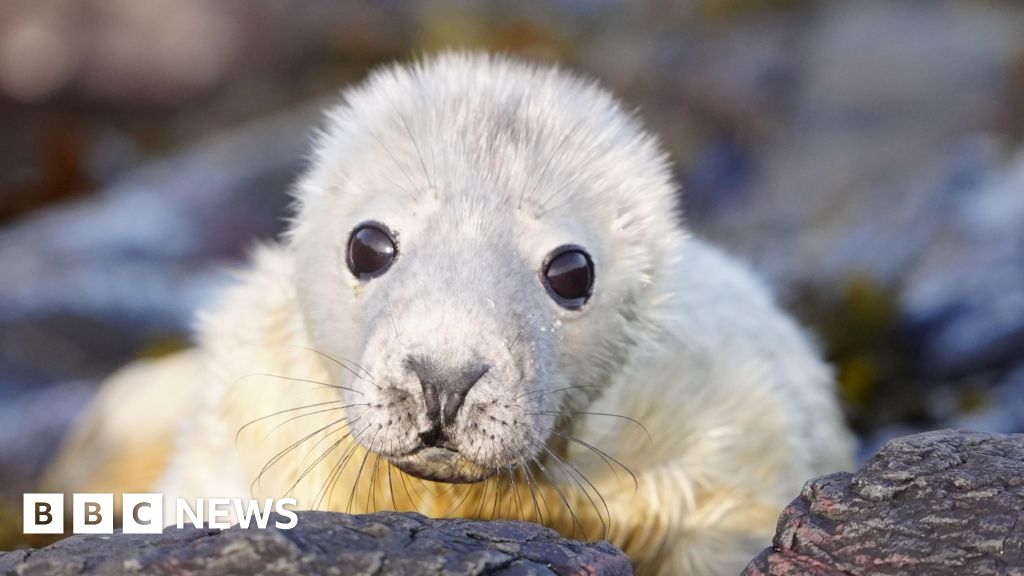Collette HoweNorth East and Cumbria
 PA Media
PA Media
The first pup was spotted on Blue Caps near Longstone Lighthouse in October
The first grey seal pups of the year born at one of England’s largest colonies will be the first counted in an annual survey.
The National Trust, which manages the Farne Islands off the Northumberland coast, carries out the yearly census to monitor the mammals’ numbers and health and to gather data to help direct conservation efforts.
The charity has been using drones since 2018 to provide more accurate data with minimal disturbance to wildlife.
Area ranger Sophia Jackson said “each pup born here is a testament to the conservation work we do”.
The annual survey will run through the autumn and once complete, data will be analysed by Newcastle University with results expected next spring.
The Farne Islands is home to one of the largest grey seal colonies on the east coast of England.
More than 3,000 seal pups are expected this season.
Visitors can watch from boat trips but are not permitted on the islands during the pupping season.
 PA Media
PA Media
The seal survey will continue through the autumn
Ms Jackson said: “Each pup born here is a testament to the conservation work we do and the resilience of this species in the face of environmental challenges particularly due to rising temperatures and warming seas.”
By using drones, rangers would be able to detect pups which might otherwise be missed and analyse images quickly while minimising disruption to colonies, the trust said.
The annual monitoring began in 1952 by Grace Hickling MBE, a ornithologist and naturalist.
Her lifelong dedication to the Farne Islands helped shape modern conservation efforts in Northumberland, the trust said.
It added her work established what was now the world’s longest-running grey seal population study.


